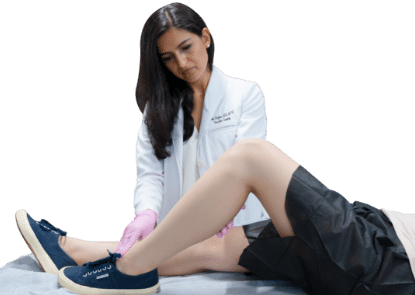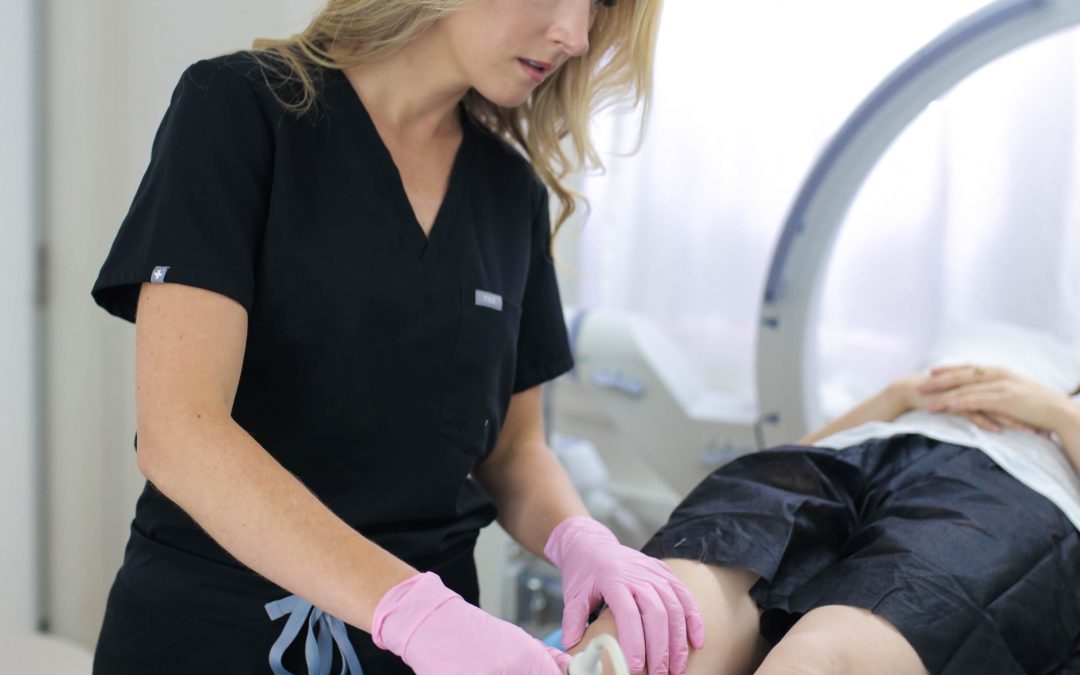We talked to a vein doctor near me Manhattan to learn more about the risk factors that contribute to vein disease, and although they are listed here from most significant to least significant, they all ultimately have the same effects of either weakening the vein valves or dilating the vein walls.
1. Genetics
If both of your parents have varicose veins, there is a 90 percent chance you will develop varicose veins, and there are so many contributing genetic factors, such as collagen development or vein wall composition, that can have a compounding effect on vein development and health, so genetics is by far the strongest risk factor for varicose veins and vein disease.

2. Biological Sex
Women are at a higher risk for developing vein disease – whether spider veins, varicose veins, or chronic venous insufficiency – than men due to female hormones such as estrogen and progesterone. Vein disease affects at least half of all women, because these female hormones have an impact on the relaxation of vein walls, which lowers blood pressure, and targeted fat deposits, that serve as a site for estrogen production.
3. Pregnancy
Pregnancy heightens risk of vein disease in various ways, as the increased levels of hormones during pregnancy leads to vein wall relaxation, and the increase in total volume of blood in the body during gestation causes the veins to swell. Additionally, as the uterus grows, it can press on veins that transport blood from the lower limbs to the heart, so there is a restriction of blood flow.
4. Age
Age is the most commonly known contributing risk factor for vein disease, because aging leads to natural wear and tear on the vein’s valves. This increases the likelihood over time of developing spider veins, varicose veins, or valvular reflex.
5. History of Blood Clots
If you have had deep vein thrombosis, or blood clots in your legs, in the past, your chances of reflux is much higher because the blood clots can cause a lot of damage to the valves of the veins.
6. Obesity
Carrying excess weight can lead to increased pressure of the veins, which causes spider veins and varicose veins. Fat deposits, as mentioned earlier, also lead to increased estrogen levels, which causes vein walls to relax and enlarge, making them more visible on the skin’s surface.
7. Occupation
If your job or day-to-day activities requires you to sit or stand for long periods of time, it can put you at greater risk of vein disease, so be sure to take breaks to walk around to decrease your chances of developing spider veins or varicose veins.
Now that we’ve talked about risk factors that are proven to contribute in varying degrees to the development of vein disease, here are some common factors that are assumed to increase your chances of vein disease, but actually don’t. A vein doctor near me Manhattan explains how they aren’t as strong of risk factors as you might think.
Hormone Treatment
We touched on the effects of female hormones, including estrogen and progesterone, on a woman’s likelihood of developing a vein disease. Due to this causal relationship, people naturally conclude that hormone treatments, such as birth control pills or menopausal hormone therapy, can increase your risk of vein disease. Be sure to talk to your primary care physician or your vein doctor at a vein clinic if you have concerns about the effects of your hormone treatment on vein disease. In most cases, vein doctors at vein treatment centers do not advise patients to stop hormone treatment or birth control to avoid vein disease, because the positive effects are greater than the risks of vein disease.
Crossing Legs
Crossing your legs is a miniscule contributor to vein disease, because it won’t cause vein disease in someone who has no risk factors, nor will perfect sitting posture prevent vein disease in someone who has a genetic predisposition to vein disease. Sitting with your legs crossed is never the inciting factor for vein disease development or prevention.
Exercise
Regular exercise does not cause vein disease, nor does it prevent the development of vein disease, but it can temporarily encourage blood circulation in the legs. This, in turn, helps push along some of the accumulated blood from the veins. Exercise is not a fool-proof way of avoiding vein disease if you have significant risk factors, but engaging in aerobic exercises that work your leg muscles, such as swimming, walking, cycling, and yoga can help get your blood flowing.
Diet
Diet alone can’t lead to or prevent vein disease, but if you have significant risk factors or are already dealing with vein disease, your dietary choices can keep your condition from getting worse. Some tips are to eat plenty of fresh vegetables or fruits, avoid salty food and stay hydrated to regulate blood pressure, and consume fiber to avoid constipation that can put pressure on the veins.
If you have spider veins or varicose veins, and need to determine if you have a vein disease, it is essential to set up an appointment with a specialist in venous medicine at a vein center to minimize damage to the veins and prevent further problems down the road. If you are looking for a “vein doctor near me Manhattan” you can contact us at the Vein Treatment Clinic location in New York City, conveniently located in the heart of New York in Midtown. The vein treatment center is close to notable landmarks such as Hudson Yard and Bryant Park, and is easily accessible, as the vein clinic is in close vicinity to both Grand Central Station and Penn Station.
You can schedule your consultation at our vein center with one of our incredible vein doctors and be assured of the highest-quality care. Dr. Sareh Rajaee is a Yale-trained vascular surgeon with extensive experience in vein and arterial disease. Dr. Juan Montoya is a Yale-trained double board-certified specialist in venous medicine and cardiothoracic surgery, and is bilingual in English and Spanish. They prioritize patient care and strive to provide treatment with compassion and professionalism. Click here for directions and check out the Vein Treatment Clinic location in New York City for vein treatment today!
